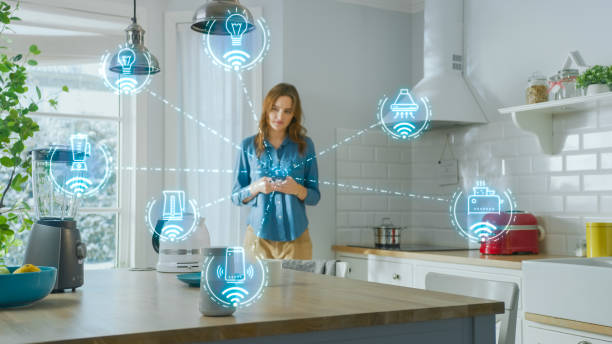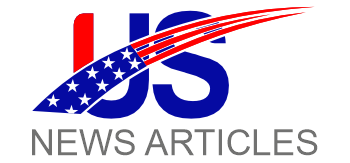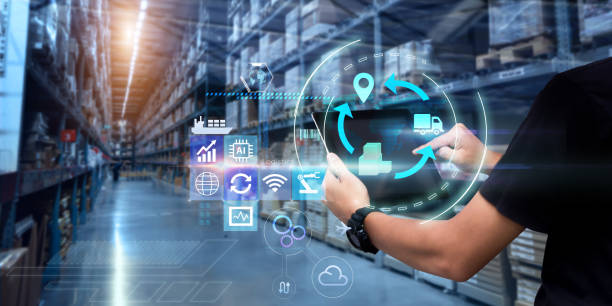The Internet of Things is an internet-networked ecosystem consisting of interconnected devices and objects that communicate through data transmission. These devices, ingeniously fitted with sensors, actuators and connectivity functions automated processes controlled them monitored their environment to enabled new functionality. The idea of IoT has its roots in the vision that brought a “smart” world where virtually everything can connect to internet with ease, making an environment different from one’s physical presence.
Important Steps of IoT Systems
Devices: For IoT systems, the Iot devices i.e., from consumer electronics to industrial sensors is a very fundamental base of all these system setup standards and techniques below which we have elaborated in this chapter are almost mandatory for applications. Such as smart buildings whereby an example can be made up on how utilization induce constructive essentials in making organizations access responsibilities wherein computation assets go about. Such devices may be smart thermostats, wearable fitness trackers, industrial robots among many others.
Connectivity: Technologies for connectivity(Wi-Fi, Bluetooth cellular networks, and LPWAN ) allow IoTs to communicate with each other or cloud-based platforms.
Data Processing: Cloud solutions and edge computing currently serve as underpinning services for IoT systems to intake the overwhelming amounts of data that flows by through various devices.
Applications: The domains in which IoT applications are used include smart cities, health sector, agriculture and animal husbandry industry; electronics devices manufacturing along with their system of assembly mercilessly transport and shacks.
Uses of IoT in Different Industries
In many industries, the potential of Internet of Things to transform is considerable leading to efficiencies in terms both process and innovation as well as generating new types business models. Let’s explore some key applications of IoT in different sectors.This is due to the lack of unity in uses leading to a negative compound judgement.
1. Smart Home Automation

IoT gives home owners an opportunity to automate and control various aspects in their homes such as lights, heating systems security components among others. Smart thermostats, lighting systems, door locks and home surveillance cameras are examples of smart household devices which can be controlled remotely through mobile applications or voice commands.
Example: Smart Thermostats
Smart thermostats such as Nest and Ecobee make use of IoT technology in learning user preferences, adjusting the temperature settings thus minimizing energy consumption while at home with an added advantage of improving comfort for owners.
2. Industrial Internet of Things (IIoT)
In the industrial field, IoT technologies help to make “smart factories”, and develop indoor asset tracking systems coherent with automation. The main thing in IIoT solutions is the use of sensor data, predictive analytics and machine learning algorithms to optimize manufacturing processes, asset management effectiveness with operational efficiency.
Example: Predictive Maintenance
Industrial equipment with IoT sensors are able to monitor machine health in real as well as predict the problem before it occurs and schedule maintenance at a best time to minimize downtime reducing costs of maintenance.
3. Healthcare
One of the trends that are driven by IoT and revolutionizing healthcare delivery is remote patient Monitoring, personalized medicine as well telemedicine. Wearable devices, biosensors, and connected medical equipment track real-time data in health thereby enabling public healthcare providers to monitor the patients’ status of well-being as well as assist them in tracking long-term diseases that can be readily noticed without an interval.
4. Agriculture
In the agricultural field, applications of IoT technology are like in soil moisture sensors that improve crop cultivation and irrigation; weather station controls environmental elements that help to manage crops optimally as well while drones check if livestock have grazed pipe fences preventing them from avoiding nature. The precision agriculture technologies supported by IoT implication allow the farmers to generate higher crop yields, render resource conserving using a less cost, and consequently minimize adverse impact on the environment.
Example: Precision Irrigation
Using soil moisture information in conjunction with weather forecasts, the Internet of Things enabled irrigation systems to ensure the right amount of water gets delivered to crops at appropriate times and reduce wastage leading to a better utilization of inputs as well as increased productivity.
5. Smart Cities
The role of IoT is significant in the establishment of intelligible, sustainable cities owing to its integration potential in diverse sectors and urban infrastructure elements. The smart city initiatives make use of IoT sensors and data analytics to better traffic regulation and enhance public safety measures as well as effective energy management together with efficient waste collection.
The Future Trends and Innovations in IoT
In the future, however, the Internet of Things will continue its quickest evolution due to technology development and new scenarios. Some key trends and innovations shaping the future of IoT include: To determine the target population, appropriate parameters must be identified.
Edge Computing: The new technologies of Edge computing permit the processing and analysis of data from the Internet of Things sources closer to their location, thus minimizing delays as well as bandwidth requirements thereby improving real-time decision-making capabilities.
5G Connectivity: The deployment of 5G networks will open a new era for Internet of Things connectivity as it doubles the bandwidth with latency reduction and improves reliability, facilitating a whole lot of groundbreaking use cases.
AI and Machine Learning: Integration of AI and machine learning algorithms in Internet of Things systems facilitate predictive analytics, anomaly detection as well autonomous decision-making functionalities. This enables an increased level of efficient intelligence sharing concerning such enhanced capabilities.
Blockchain Integration: Relying on blockchain technology and the security of Internet of Things ecosystems has increased impressively along with ensuring transparency and trust. Secured data exchange through smart contracts can take place in a distributed network when it comes from multiple sources within an ultra-scale scenario being managed by drastically different autonomic entities.
Conclusion
The Internet of Things is a catalyst that creates industries’ redesign processes and reconceptualizes human-machine bonds. Through the knowledge of basic components; applications, challenges, and future trends in Internet of Things technology organizations can use it to help them be innovative and efficient as well adapt technologically aided growth for efficiency during the digital world.

